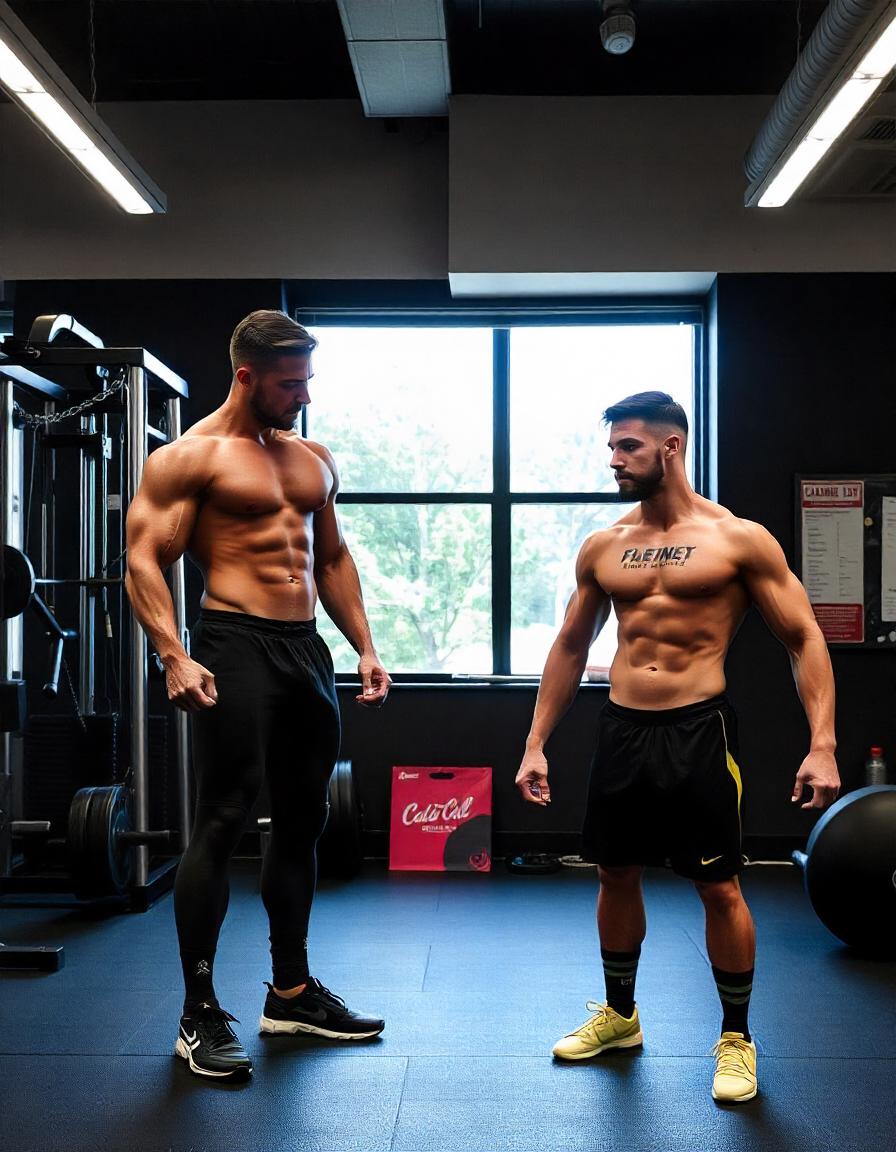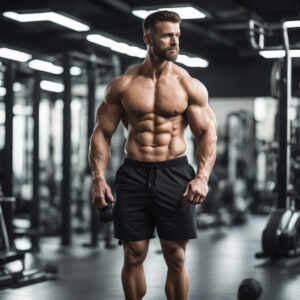
Table of Contents
Introduction
If you’ve spent any time around a gym or fitness community, you’ve probably heard of two major training approaches: bodybuilding and functional training. Both can be transformative, but they differ significantly in terms of goals, methods, and results. So, whether you’re looking to build the physique of your dreams or develop functional strength that helps you in everyday life, it’s important to understand how these two forms of training stack up against each other.
In this post, we’ll break down the core differences between bodybuilding and functional training, and help you decide which approach b3st suits your needs and goals.
The Basics: What Is Bodybuilding?

Bodybuilding is the sport of building muscle through weight training and structured dieting, with the primary goal being to increase muscle size, definition, and symmetry. At the professional level, bodybuilders train and diet with precision to sculpt their bodies for competition. However, many non-competitive gym-goers also follow bodybuilding-style workouts to improve their appearance, strength, and muscle mass.
Bodybuilding training typically focuses on hypertrophy—the increase in the size of muscle cells. The primary goal of a bodybuilder is to develop a highly aesthetic physique that showcases well-defined muscles, often at a very low body fat percentage.
The Basics: What Is Functional Physique Training?

Functional physique training (sometimes just referred to as “functional training”) is centered on improving performance in real-world activities. Instead of focusing solely on muscle size and aesthetics, the goal is to develop strength, balance, endurance, mobility, and flexibility in a way that improves how your body moves and performs in daily life.
The term “functional” refers to the fact that the exercises mimic the patterns of movement you perform regularly—whether it’s lifting heavy objects, jumping, sprinting, or squatting. People who train for functional fitness are not just concerned with looking good but also being able to move well, perform physical tasks efficiently, and reduce the risk of injury.
Key Differences in Training Approaches
1. Goals: Appearance vs. Performance

Bodybuilding: The primary goal of bodybuilding is to sculpt a muscular, aesthetic physique. Bodybuilders aim to increase muscle size (hypertrophy) and achieve a balanced, symmetrical look. Their training is all about maximizing muscle growth in specific areas while maintaining low body fat to highlight definition. The focus here is on the appearance of muscles rather than how they function in practical terms.
Functional Training: The key goal of functional training is to improve physical performance in everyday movements, such as lifting, pushing, pulling, bending, and rotating. The aesthetics come as a byproduct rather than the focus. Functional athletes train to improve their ability to move, reduce injury risk, and increase overall strength, endurance, and agility.
In essence, bodybuilding is about looking strong while functional training is about being strong and moving effectively.
2. Training Volume and Reps
Bodybuilding: A typical bodybuilding workout focuses on targeting one or two specific muscle groups per session. Bodybuilders usually perform exercises in the 8-12 rep range, as this is considered optimal for hypertrophy. Sets are performed to near failure, meaning the muscle is worked to its maximum capacity.
Bodybuilders tend to use isolation exercises—movements that focus on a single muscle or muscle group at a time. Examples include bicep curls, leg extensions, and chest flys. These exercises are great for maximizing muscle growth in specific areas but don’t always translate into functional strength for everyday tasks.
Functional Training: Functional training routines often use a higher variety of movement patterns and exercises. Rather than isolating a single muscle group, functional workouts typically include compound, multi-joint movements that engage multiple muscles at once. The idea is to replicate the way the body moves in real life, building strength in more dynamic ways.
Reps in functional training can vary widely depending on the movement, but they are often higher (15+ reps) and performed with a focus on stability, balance, and endurance. Instead of strictly following sets and reps, functional training might incorporate timed circuits, where athletes complete as many rounds of exercises as possible within a given period.
3. Exercise Selection
Bodybuilding: A bodybuilding program often revolves around isolation exercises, like bench presses, leg curls, or lateral raises. The goal is to break down the muscle tissue with targeted, repetitive movements to stimulate muscle growth. Bodybuilders carefully select exercises that allow them to work on specific muscles in a controlled way to build maximum size and symmetry.
Functional Training: Functional training exercises typically include movements that engage multiple joints and muscle groups. These exercises might be squats, lunges, kettlebell swings, or deadlifts—movements that mirror what you do in real life. Instead of focusing on the aesthetic outcome of each muscle group, the emphasis is on creating efficient movement patterns.
For example, a functional workout might include compound movements like a squat-to-press or a deadlift paired with a row. These types of exercises not only build muscle but improve coordination, balance, and mobility.
4. Cardio and Conditioning

Bodybuilding: While some bodybuilders may incorporate cardio into their routines, it’s often used sparingly and strategically. Cardio in a bodybuilding regimen is primarily for fat loss, allowing the muscles to look more defined. Bodybuilders often rely on steady-state cardio (such as walking on a treadmill) as a way to burn fat without negatively affecting muscle size.
Functional Training: In functional training, cardio and conditioning play a much more integrated role. Exercises often combine strength and cardiovascular elements to build endurance and overall fitness. High-intensity interval training (HIIT) is a common component of functional training, where short bursts of intense effort are followed by periods of rest. This not only builds strength but also boosts cardiovascular health and burns calories efficiently.
5. Rest and Recovery
Bodybuilding: Bodybuilding programs often involve a split training approach, where different muscle groups are worked on different days to allow for recovery. For example, one day might focus on chest and triceps, while another might be devoted to back and biceps. This allows each muscle group to rest for 48-72 hours before being trained again, maximizing growth.
Functional Training: In functional training, the focus is often on full-body workouts, so rest and recovery look a little different. Workouts may be structured in a way that ensures different movement patterns or muscle groups are emphasized on different days, but the goal is often to keep the body moving regularly to maintain functional strength and mobility.
Which One Is Right for You?
The choice between bodybuilding and functional training depends largely on your personal goals and what you hope to achieve through your fitness routine. Here’s how to decide which approach might be best for you:
- Choose Bodybuilding If:
- You’re primarily focused on building muscle mass and creating a sculpted, aesthetic physique.
- You enjoy isolation exercises and prefer a more structured training regimen with set rest days.
- You want to compete in bodybuilding or simply appreciate the discipline of pushing your body to develop muscle symmetry.
- Choose Functional Training If:
- You want to improve your overall strength, endurance, balance, and mobility in a way that directly benefits your daily life.
- You enjoy dynamic, full-body workouts and the challenge of mastering various movement patterns.
- You’re interested in injury prevention and longevity in your fitness journey.
Can You Combine Both?
Yes! Many people find great success in combining elements of both bodybuilding and functional training. For example, you might dedicate certain workouts to hypertrophy and aesthetic goals while including functional movements like kettlebell swings, squats, and planks to enhance your everyday strength and mobility.
The best approach is often one that is varied and balanced, incorporating different training methods that keep your body challenged and progressing over time.
Bodybuilding Training Example: Push Day (Chest, Shoulders, Triceps)
This routine focuses on muscle hypertrophy, aiming to build size and definition for specific muscle groups.
Warm-Up
- 5-10 minutes of light cardio (walking or cycling).
- Dynamic stretches targeting the upper body (arm circles, shoulder rolls, chest stretches)
Workout
- Flat Barbell Bench Press
- 4 sets of 8-10 reps
- Focus on muscle contraction, control the movement.
- Incline Dumbbell Press
- 3 sets of 10-12 reps
- Target the upper chest, emphasizing a full range of motion.
- Pec Deck Machine Fly
- 3 sets of 12-15 reps
- Squeeze at the top to emphasize chest contraction.
- Dumbbell Shoulder Press
- 4 sets of 8-10 reps
- Control the weight to target the shoulders fully.
- Lateral Dumbbell Raises
- 3 sets of 12-15 reps
- Keep the elbows slightly bent, focus on isolating the deltoid muscles.
- Cable Tricep Pushdowns
- 3 sets of 12-15 reps
- Keep the elbows locked to emphasize the triceps.
- Skull Crushers (Lying Tricep Extensions)
- 3 sets of 10-12 reps
- Focus on a slow eccentric movement for optimal triceps engagement.
Cooldown
- Light cardio (5 minutes)
- Static stretching for the chest, shoulders, and triceps
Functional Training Example: Full-Body Strength and Conditioning Circuit
This routine emphasizes functional strength, mobility, balance, and overall athleticism.
Warm-Up
- 5-10 minutes of dynamic warm-up (jumping jacks, high knees, leg swings)
- Mobility work (hip circles, shoulder mobility drills, ankle mobility)
Workout (Circuit Style)
Complete 4 rounds of the following exercises with minimal rest between exercises:
- Kettlebell Swings
- 12 reps
- Focus on hip hinge movement and explosive power from the hips.
- Goblet Squats
- 12 reps
- Hold a kettlebell or dumbbell in front of the chest, keeping the core engaged throughout the movement.
- Pull-Ups (or Assisted Pull-Ups)
- 8-10 reps
- Engage the lats and use a full range of motion.
- Push-Ups with Rotation
- 10-12 reps
- Perform a push-up, then rotate to a side plank position after each rep, alternating sides.
- Walking Lunges with Dumbbells
- 20 steps (10 per leg)
- Keep the torso upright and engage the core while stepping forward.
- Box Jumps
- 10 reps
- Jump explosively onto a box, landing softly with bent knees.
- Plank to Shoulder Taps
- 20 taps (10 per shoulder)
- Hold a plank position, tap each shoulder while keeping the hips stable.
Cooldown
- Light cardio (5 minutes)
- Full-body stretches with a focus on mobility (hip flexors, hamstrings, shoulders)
Key Differences
- Bodybuilding: Focuses on isolating muscles for hypertrophy (muscle growth), with structured sets and reps targeting specific areas.
- Functional Training: Emphasizes movements that improve strength, balance, and agility in a more dynamic, full-body approach.
Both approaches are effective but are tailored toward different goals—muscle size vs. practical strength and movement efficiency.
Conclusion
Whether you’re aiming to build a show-stopping physique or simply want to move better and feel stronger in everyday life, understanding the difference between bodybuilding and functional training is key to reaching your fitness goals. Bodybuilding focuses on aesthetics, hypertrophy, and muscle isolation, while functional training is about performance, multi-joint movements, and overall physical capability. By choosing the approach that aligns with your personal goals, or even combining both, you’ll be well on your way to a stronger, healthier, and more capable body.



